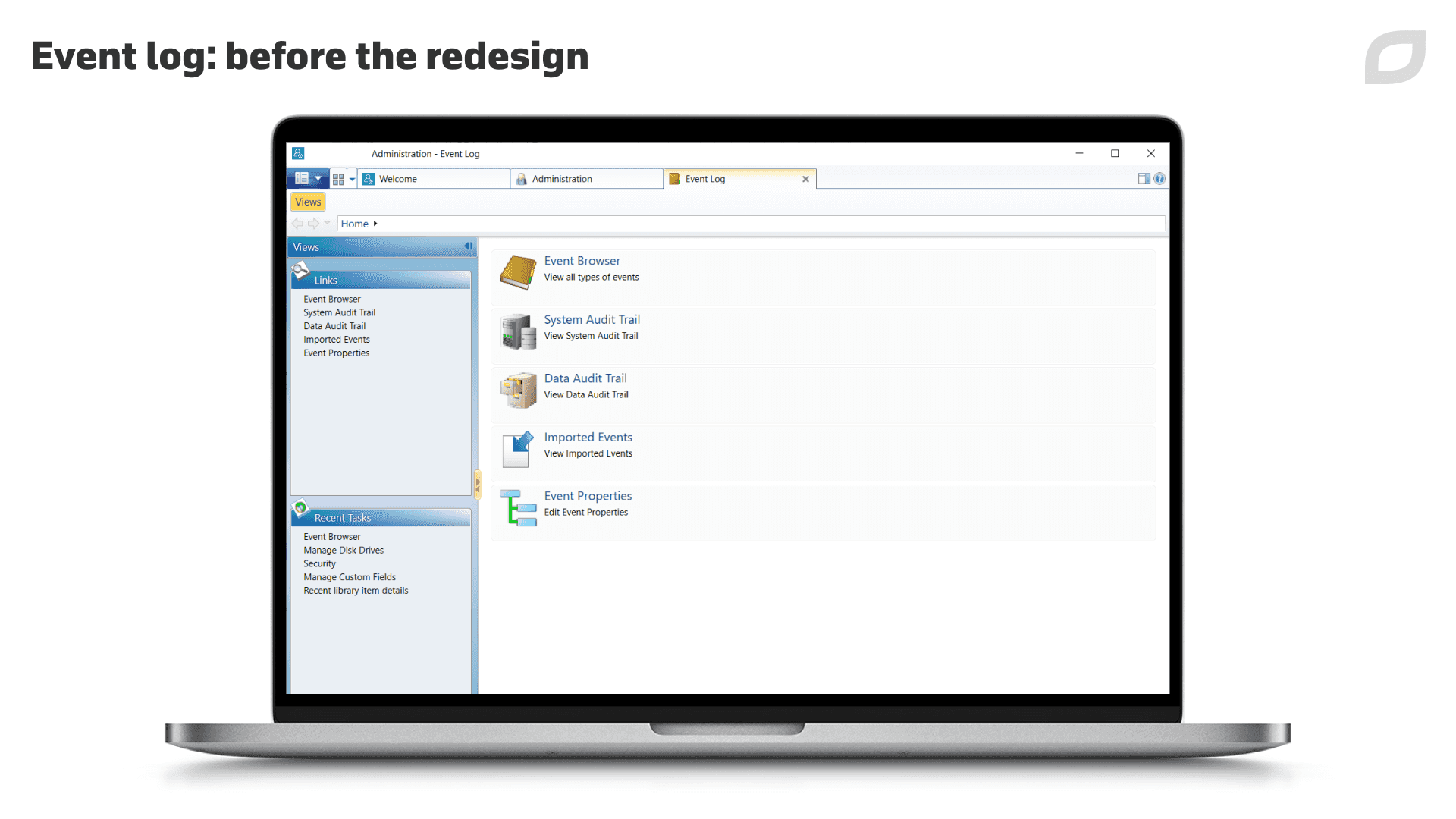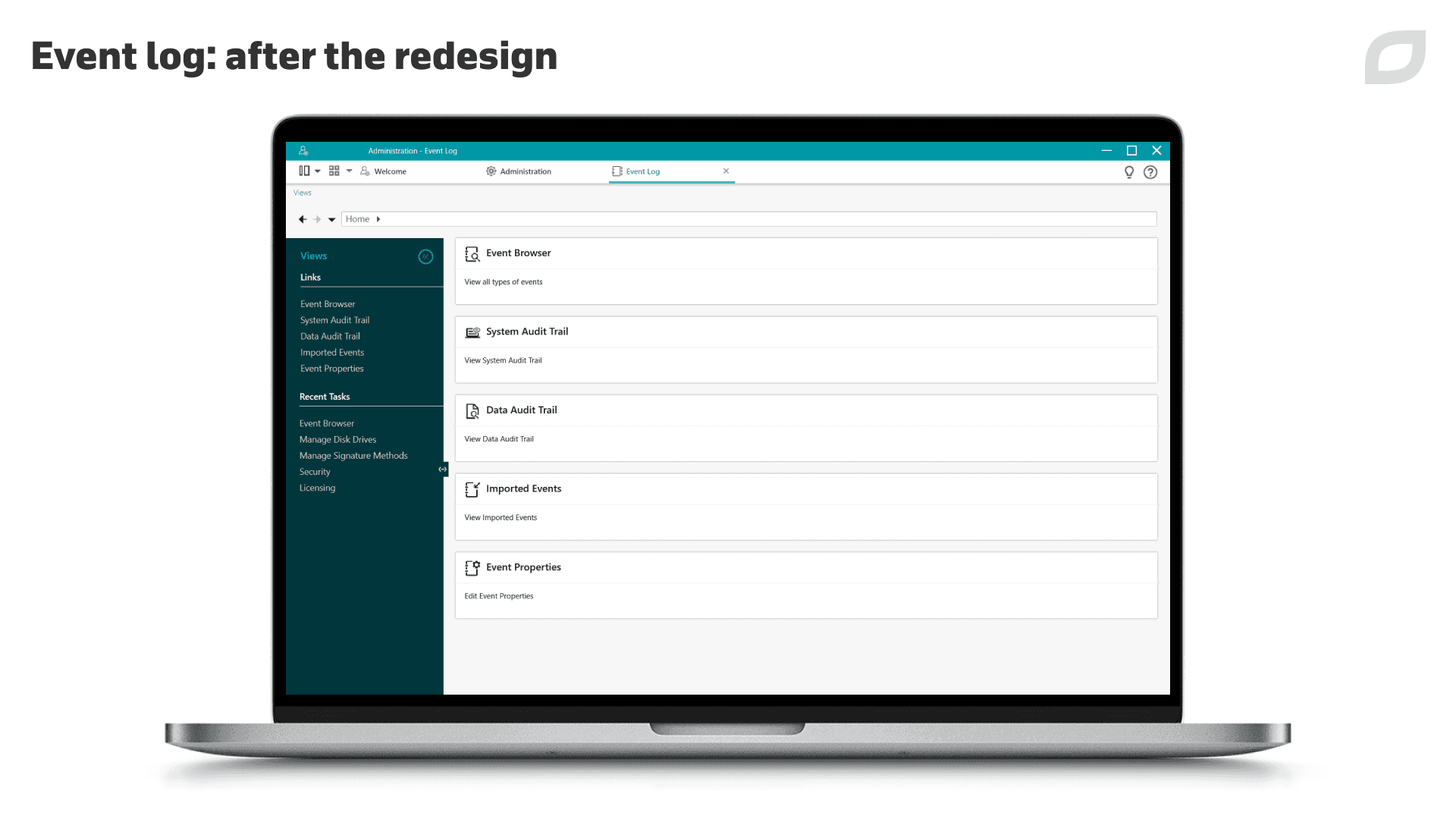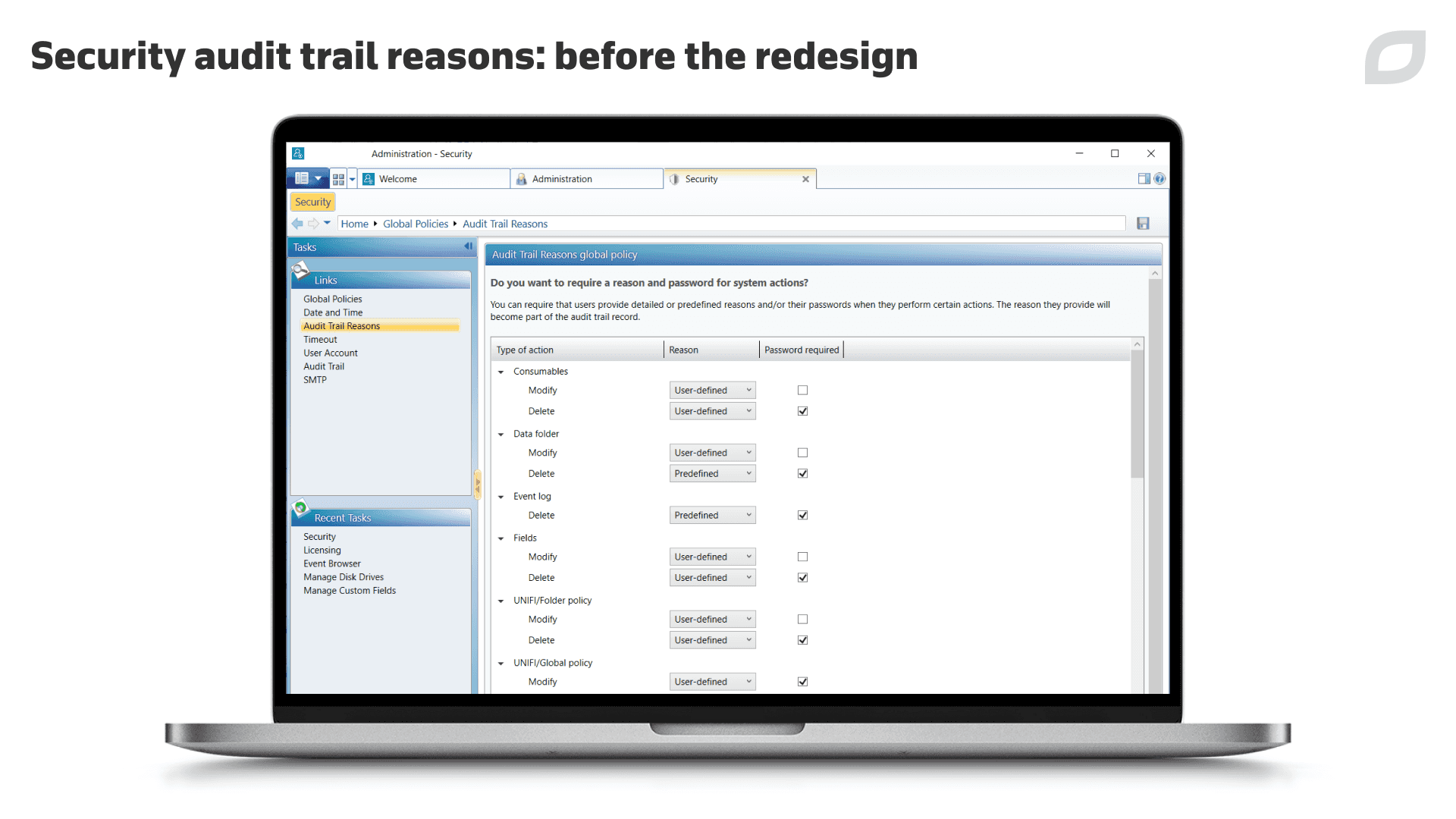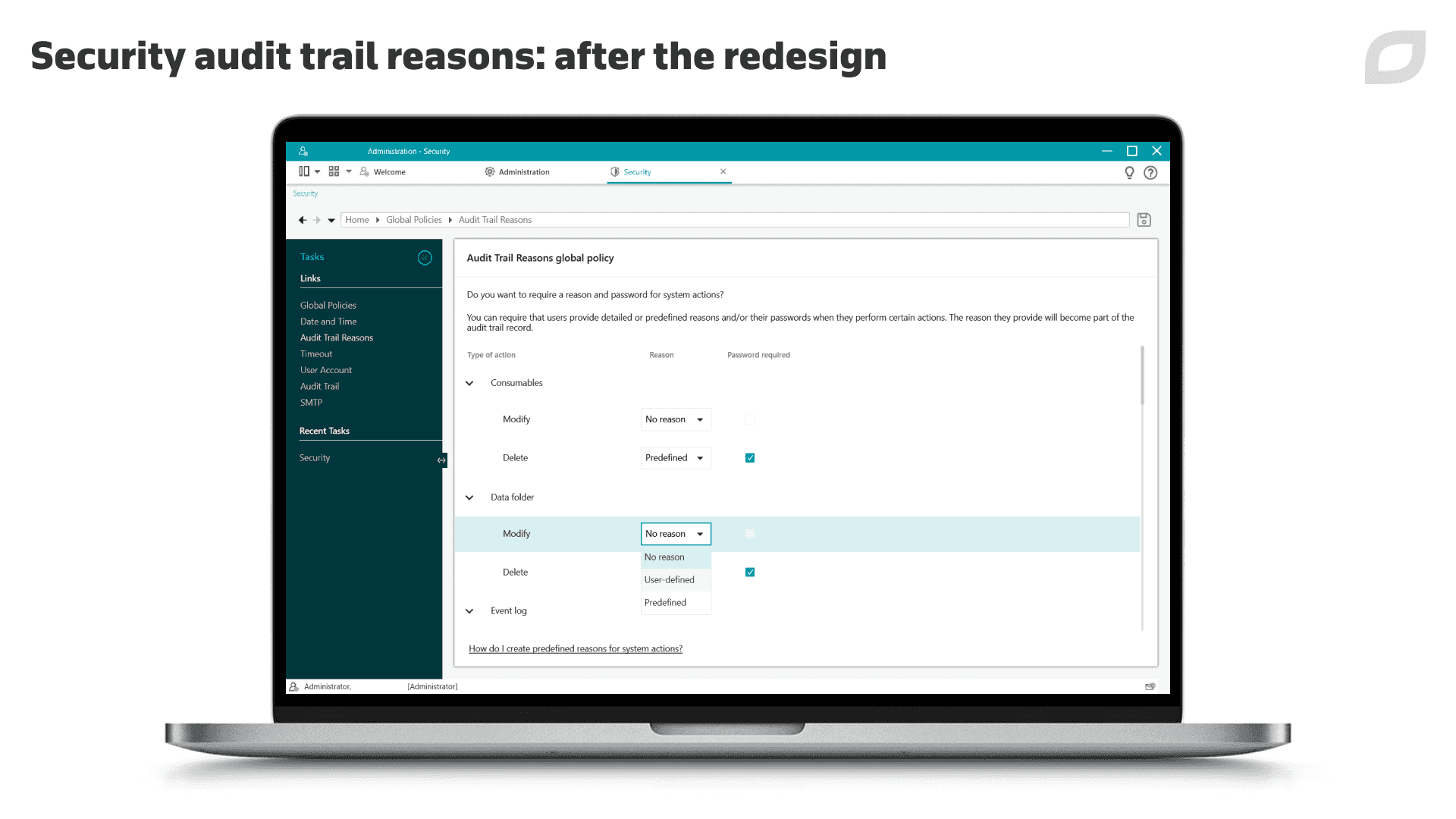
Healthcare analytics applications revamp for a US multinational
Itransition helped the customer bring their solutions up to speed with the modern tech stack and further secure their leading position in the healthcare analytics app market.
Customer
The customer is a global leader in designing, manufacturing, selling, and providing support for analytical solutions for the healthcare and pharmaceutical industries. They produce and supply equipment and accompanying software for researchers and chemical/medical laboratories. The company runs 10+ factories internationally and boasts 40K+ customers, including the top 40 pharmaceutical industry leaders.
The customer aims to deliver products as fast as possible while keeping the quality high. The company's goal is to increase market share, keep up with the technological advances in healthcare and pharma, and give their customers a positive experience at all times.
Challenge
The customer’s healthcare analytics product line was losing in quality and stability to competitors’ equivalents, so the customer decided to modernize their products, optimize development processes, and speed up the releases with no harm to quality.
The customer was looking to update their products’ look-and-feel and make them easily customizable, scalable, and updateable. For this, they were in search of a reliable partner who could also automate testing and software lifecycles, becoming a natural extension to their own globally distributed teams. They chose Itransition thanks to our expertise in healthcare software development, quality assurance, and DevOps consulting backed by a track record of successful projects.
Solution
Given the scope, the cooperation was broken down into several large-scale tasks—product overhaul, QA, and DevOps.
The collaboration between Itransition and the customer began in 2017, when the customer first required QA. In 2018, we also launched a number of frontend software development projects together, redeveloping five products for both internal and external use. Itransition was also responsible for setting up Agile collaboration and communication processes in all the projects.
Redesigning healthcare analytics apps
The customer had a range of solutions used in labs by scientists and chemists all over the world. All these apps, from desktop to web ones, had to be updated and made more flexible to address the analytical needs of busy labs while meeting the current demands of the market.
In the process, Itransition’s developers created two solutions for the customer’s internal use (the UI elements library and the administration panel) and three products for end-users (the lab information editor, the sample import software, and the unified app store).
The UI elements library
The customer’s numerous apps each had varying UIs with no single style. To improve the UX and facilitate any new app development, a unified, consistent UI to span all of the customer’s apps was needed. So we worked closely with the customer’s UX team and product owners to develop a flexible and user-friendly library with typical UI components written in Angular: Buttons, Cards, Chips, Dialog boxes, Dropdowns, Expansion panels, Lists, Navigation bars, Selection controls, Sliders, Snack-bars for messages, Tables, Tabs, Toolbars, Workflows.
Each element type has variations, for example, the card element group consists of different card types: card + enhanced state, homepage card (resizable), homepage card + buttons (resizable), and more. Element groups are also accompanied by a code example, which makes it easier to create the element.
Restyling the admin panel
The customer had a multi-tenancy admin panel for accessing and managing all their product lines. The task was to restyle it without changing the functionality.
To do this, we analyzed the legacy code, refactored it, and provided a new design for the outdated platform. After the demo approval, we restyled the platform, created a release branch, and shared it across all the teams that use this admin panel. More complex customizations required a careful manual implementation to ensure the new UI and legacy tech stack compatibility. After that, we moved to providing ongoing support for the admin solution.
The redesigned panel allows users to log events, control licensing and offline storage management, access the scientific library and security features, manage signature methods for signing reports, and more. The tool is a cost-effective industry-standard product with versatile dependable performance, flexible system configurations, and scalable features.




The lab information editor
The customer had a desktop editor for scientists to analyze data from labs specializing in medicinal chemistry, bioanalysis, drug metabolism, impurities analysis, natural products, and more. Together with the customer’s team, our frontend developers implemented its new design.
After releasing the first version of the app design, we analyzed the feedback from scientists and further improved the app according to their recommendations, followed by beta testing and beta release.
This app for lab information management is high-performing and simple in operation. It helps address the daily analytical needs of busy labs and provides maximized usability thanks to the intuitive design.
The sample import software
The customer’s product range includes innovative direct sampling tools to trace, identify, and quantify unknown compounds and molecular targets in complex test samples. These apps are used in labs and accredited facilities to determine the substance quantity in a test sample.
One of the products is a complex sample submission, processing, and analysis solution that spans multiple tools. It is used for quantitative analysis and helps scientists boost process efficiency, increase throughput, and maximize sensitivity.
Using .NET, Itransition redeveloped the part of the system responsible for sample submission, processing, and analysis, as well as displaying data processing results via charts and reports. Apart from frontend development, Itransition also provided .NET support and split the customer’s existing monolithic installer into a bundle of installer components with their own UI, free disk space, etc.
The system helps analyze the results of lab measurements and work with them, allowing chemists to see test outcomes, perform calculations, and draw conclusions thanks to easily readable charts. It provides a simplified, intuitive, and logical workflow that helps make the ultimate use of the available information.
The intuitive reporting UI means that access to data is easy for scientists with different levels of expertise, that’s why the solution is used in practical chemistry education packages for future scientists to establish how many components are in a sample and in what quantities.
The consolidated app store
The customer has a number of qualitative and quantitative desktop apps that are used in world-class labs in biopharmaceutical, pharmaceutical, chemical, and health sciences, food industry, environmental studies, and forensic toxicology fields. To meet labs’ demands in terms of the quality of analysis and scientific operations, the customer needed to move apps from the desktop to web platform and make them available via their own proprietary app store.
Together with the customer’s team, Itransition’s engineers built the web app store, creating UI elements and tools to enable admins to make audit logs when analyzing errors and user actions.
Quality assurance
To increase the software test coverage and shorten test cycles, the customer needed to implement software deployment automation, load testing, and regression testing. The goal of introducing test automation was to minimize the testing time for more frequent product releases.
We analyzed the existing test processes, refactored the legacy auto-tests, and wrote new auto-tests for 10+ QA projects. To avoid creating the test infrastructure from scratch, the QA team chose Docker to set up and maintain servers for test automation.
One of the projects was to assure the quality of the customer’s software in use by informatics laboratory professionals. The tested software platform allows users to acquire, process, and visualize data, create reports, and configure compliance tools in a networked lab environment.
This QA project resulted in the following:
- 1,500+ test scenarios implemented
- A 95%+ test pass rate
- 2x faster test runs
Another important QA project featured the customer’s chromatography data software (CDS) for running samples and getting vital insights. For that project, we implemented 1,200+ test scenarios and achieved a 100% test pass rate.
Itransition’s QA experts also delivered the following:
- A reporting portal for analyzing test run results
- The guidelines for auto-test implementation
- Workshops for the customer’s in-house QA specialists
DevOps
Itransition also automated the testing infrastructure setup for the updates of Windows versions and client builds, introducing CI/CD processes with Jenkins-Docker and Docker-VMWare. To do that, our team prepared an environment for Docker that runs Windows with the ability to power various versions of build-agents (Bamboo, MSBuild, several versions of VS) and carried out test automation in Jenkins.
As a result, now it’s possible to set up a certain environment with particular parameters in a click, then install a particular product version on it, and run smoke tests. After the test run, a quality report is generated, and the environment is folded automatically. The pack we created can be set up, customized, extended, and used for Oracle and Windows Server testing.
Apart from test automation, the customer needed to test the impact of different Windows updates on their chromatography data software application. The manual installation of updates took significantly more time and resources to cover the customer’s needs. The automation allowed the team to handle only emergency cases, thus freeing resources. The QA team can easily start an update at any time and then test it without involving DevOps engineers.
Results
During this long-term partnership, Itransition’s team have become an integral part of the customer’s development, QA, and DevOps processes. Our dedicated team provides consultations to the customer on future improvements, brainstorms innovative ideas and the ways to implement them. The mutual expertise exchange allowed both parties to grow technically and process-wise.
To sum up the collaboration, Itransition helped the customer achieve the following results:
- The redesigned suite of five products provides a better user experience while also showing higher competitiveness compared to their previous versions.
- The centralized app store features all of the customer’s web-based products, making their discovery easier for end clients.
- Test runs are now completed twice as fast.
- A testing environment can be set up in a few clicks.

Services
Application Modernization Services
Itransition provides legacy application modernization services, helping companies revamp outdated software of any type to make its operation more efficient.

Case study
Pharmaceutical data analytics suite for a US multinational
Read about Itransition’s 10+ years long cooperation with a US-based multinational to create their flagship pharmaceutical data analytics products.